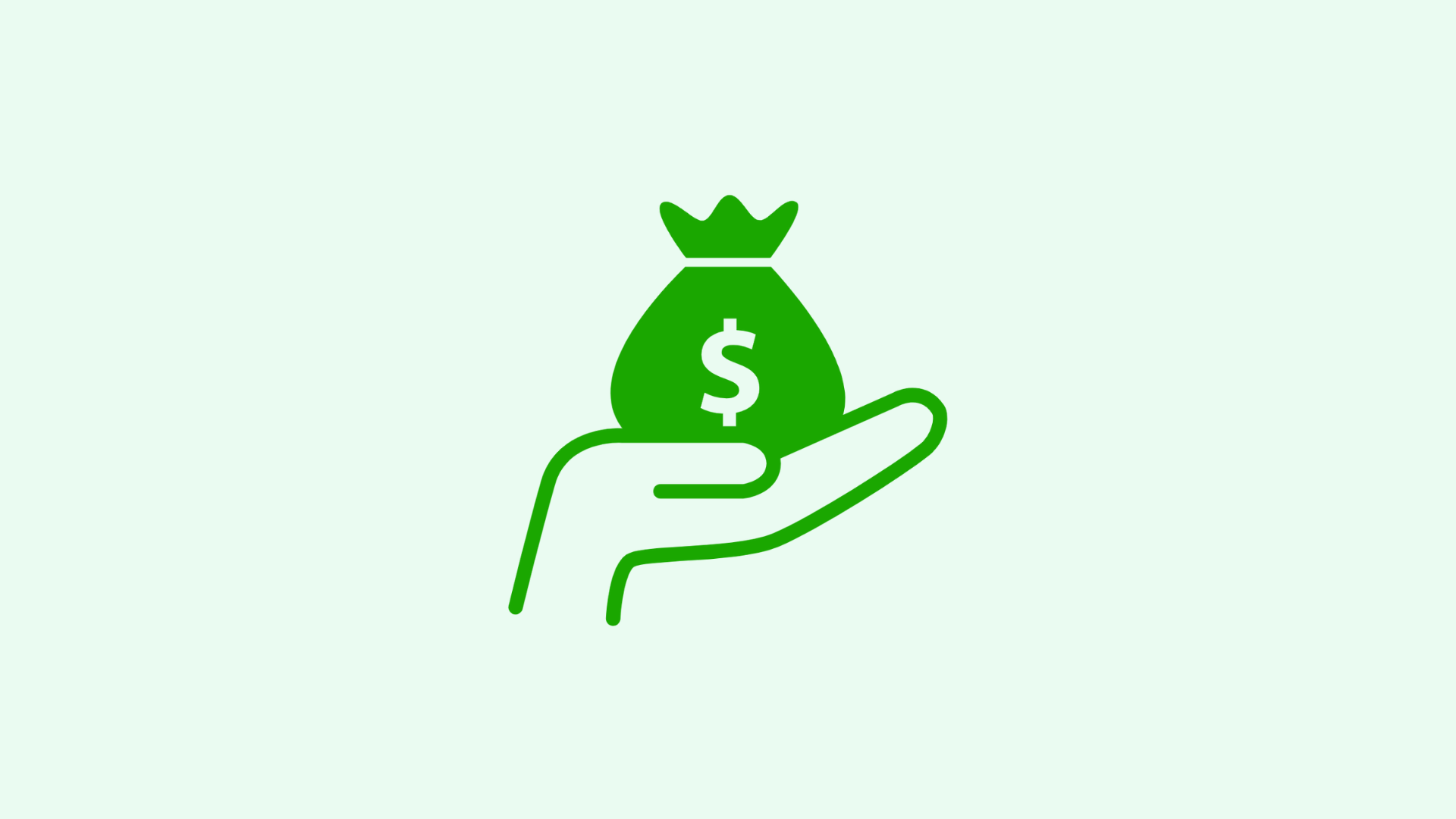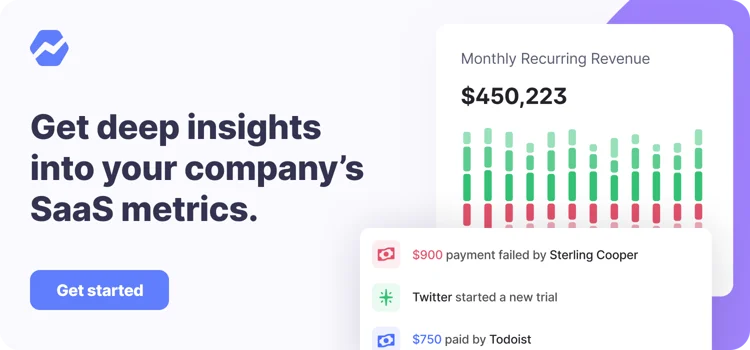Table of Contents
More Founders Journey Articles

Let’s be honest; I hate accounting jargon and hate jargon-filled explanations even more.
This article will explain what accounts receivable are and how they are done in traditional and SaaS businesses.
Make sure to read until the end– I am going to tell you a secret that could save you $100,000s in annual SaaS revenue.
What are accounts receivable?
Imagine you run a mango business named Sweet Mangoes. On a fine summer morning, Joey, who runs an ice cream parlor, comes to you and buys ten mangoes worth $5. He pays you the money right away.
Here, a transaction was made—you gave the mangoes and received the money for it. You record $5 in your assets as cash received. Nothing complicated is happening here.
Now, what if Joey doesn’t have that money at the moment so you give him the mangoes but don’t receive the money right away? He promises to give it to you after a week and you send him an invoice mentioning everything. We know this as selling on credit.
How do you record this transaction?
It depends on your accounting procedure; if you follow cash basis accounting, you record nothing until you get paid. If you follow accrual basis accounting, you record the transaction as accounts receivable.
The $5 invoice is receivable to you, and it is an asset since you have earned it even though you don’t have it in cash.
To put this more formally:
Accounts receivable are the money your customers owe you for the goods or services you have delivered to them but they have yet to pay. Accounts receivable go on the assets side of the balance sheet since that money belongs to you, even though you have not received it yet.
Accounts receivables vs. accounts payable
Now that we know what accounts receivable are, let’s learn about accounts payable .
Accounts receivable and accounts payable are simply two sides of the same coin. If the money is owed to your business, you record it in the accounts receivable, since you will receive that money in the future. On the other hand, the business which owes you that money records it in the accounts payable since it has to be paid in the future.
While accounts receivable are an asset, accounts payable are a liability.
Accounts receivable in a traditional company
Let’s go through the entire process step by step to understand how accounts receivable work in a traditional business.
Outstanding invoices
The first step of documenting accounts receivable is sending an invoice to the customer.
An invoice is a document that keeps a record of the transaction by stating all the goods and services you have delivered to the buyer. It also mentions the amount of money the buyer owes you and the time within which they have to pay.
We refer to unpaid invoices as outstanding invoices, and, if they are still unpaid after the due date, we call them past due invoices. Both are receivables.
Finding information on the balance sheet
The journal entry for the above-mentioned transaction would look like this:
|
Debit |
Credit |
|
|
Accounts Receivable |
$5 |
|
|
Sales |
$5 |
On the balance sheet, accounts receivable can be found under the current assets—i.e., cash or receivables expected to convert into cash within a year—while accounts payable can be found under current liabilities.
Following up with invoices
Now comes the annoying part: How do you convert the receivables into cash? You have to make sure that you get paid promptly or else your business will suffer.
Unfortunately, there are several reasons for which the invoices could remain unpaid. You have to follow up with your customers and remind them to pay. The best practice is to not wait for too long and to be professional.
The above deals with receivables in traditional businesses. But, since you are here, you are likely more concerned with SaaS businesses. So, let’s move on to that.
Accounts receivable in SaaS
Unlike the outstanding or overdue invoices in traditional businesses, accounts receivable in a SaaS business look different.
This is because of the fundamental difference between the traditional business model involving one-time purchases and the SaaS business model involving recurring revenue.
Failed credit card payments
In SaaS businesses, accounts receivable typically come from failed credit card payments. Credit card payment failures can occur for many reasons, such as expiration, lack of funds, or geographical location.
Regardless of what caused them, failed payments can give a sharp blow to your business in two ways.
First, while, in a traditional business, an unpaid invoice would only affect the fixed one-time revenue that was supposed to come from a purchase, in a SaaS or subscription business, a failed payment affects the long-term recurring revenue as well. It may also cause the customer to unintentionally churn altogether.
Second, you will drain your resources following through on failed payments, which could otherwise be spent more productively.
Outstanding overages
Another type of receivables in SaaS is outstanding overages. If you are not familiar with overages, here’s a brief explanation.
There are different pricing models in SaaS businesses, and one of them is the hybrid pricing model of recurring fee + usage fees. There are various pricing systems within the usage-based model as well, each with its benefits and limitations.
In the overage pricing model, a company gives the customer a certain number of units for a particular period. If the usage exceeds the limit during the billing period, the customer is charged per unit for the extra usage.
All the data your startup needs
Baremetrics Recover efficiently handles all your failed payments with a guaranteed ROI. Recover might be the single best investment for your SaaS business.
How to do accounts receivable in SaaS
Now that you understand receivables and failed payments, let’s see what you can do about them.
Dunning emails
Dunning has a bad reputation because of how companies usually approach it, which can upset customers.
Following a proper dunning process, however, not only minimizes the loss in revenue but also can help you build a better relationship with your customers by adding customer touchpoints.
What is that process? You simply spend all day meticulously sending emails to your customers telling them that their payment has failed, and they need to do something about it.
Sounds fun, right? And customers are willing to bang their head on a wall trying to figure out what exactly they need to do, right? Yeah, this couldn’t be farther from the truth.
The truth is that you need good dunning management software to save yourself and your customers from all this fuss or else you are going to lose money.
So, let me present to you one of the best dunning management tools that makes the whole thing a piece of cake.
Baremetrics Recover
On average, SaaS businesses lose 9% of their revenue every month to failed payments (or even more, as the number of customers increases). Something must be done to prevent this.
As discussed above, the answer is dunning, but it can be a complete headache if you don’t have a proper system in place.
What if there were a magic wand that could fix it all with a swish-and-flick? Sadly, there’s no such wand, but there’s something just as good—Baremetrics Recover.
Recover takes care of all your failed payments and stops your revenue from leaking out.
Here is how you can start recovering your lost SaaS business revenue in four simple steps:
1. Enable Recover on your Baremetrics Dashboard.
It takes just one click to enable the Recover add-on and to recover your lost revenue. For this, you must have a Baremetrics account. If you don’t have one, sign up for the Baremetrics free trial now.
2. Set up automated drip campaigns for failed payments.
We have nearly a dozen ready-to-use and customizable email sequences for you. You can choose to send emails from one of your team members when it matters.
3. Enable in-app reminders and paywalls for your failed payments.
This one is a simple copy-and-paste method. Copy our code snippet to enable in-app reminders for your customers to let them know about the payment failure.
You can also choose how much time you allow your customers to use your product before they are forced to update their payment method.
4. Send your customers to a customizable form to update their billing details.
Those emails and in-app reminders send your customers to an easy-to-follow credit card form. You can set those forms on a Baremetrics sub-domain or your personal domain with your own branding.
That’s it!
It can’t get any easier than that. It’s a one-time job that is probably the highest ROI activity you can do in your business.
No, that’s not an exaggeration. Recover gets back so much money from failed payments, it fully pays for your Baremetrics account. It pays 38 times its cost on average!
Wait, I’m not done yet. If you get a negative ROI (not likely), we won’t charge you anything for your next month. We also won’t charge you for Recover until you get back at least $1000.
So, what are you waiting for?
Sign up for a 14-day free trial right now to stop your revenue from leaking out.
Conclusion
Accounts receivable are simply the money your customers owe you. The way we record and process them in traditional businesses differs from that in SaaS businesses.
Receivables in traditional businesses involve outstanding invoices, while in SaaS businesses they’re failed credit card payments and outstanding overages.
We estimated that SaaS businesses lose 9% of their monthly revenue to failed payments on average. To stop this revenue from leaking out, you need a proper dunning management system.
Baremetrics Recover efficiently handles all your failed payments with a guaranteed ROI. It offers you an orchestra of smoothly running tools that make sure you are not leaving money on the table.
Recover might be the single best investment for your SaaS business.


